“Art has the role in education of helping children become like themselves instead of more like everyone else”
Sydney Gurewitz Clemens
Art and Design at Mersey Park

Art at Mersey Park
Please click the link below to find out about how we teach Art and Design at Mersey Park.
Art at Mersey Park Primary School
Art Report to Governors
Art and Design Report for Governors 2025
Long Term Overview for Art
Art and Design at Mersey Park



Autumn Term
Foundation 1
In Foundation 1 the children explore making things with different materials, they create closed shapes and begin to use these shapes to represent objects. They explore colour and colour mixing and are introduced to the work of famous artists. They create art pieces inspired by the autumn treasures that they see around them.

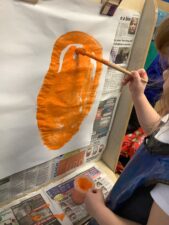

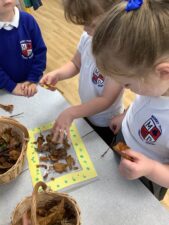
Foundation 2
In Foundation 2 the children refine their colour mixing skills to create skin tones which they use to paint self-portraits. The children build on their previous learning and mix colours for other purposes, for example, to paint pumpkins. They complete an observational drawing of Autumnal objects which they collect from the outdoor classroom area. They find out about Vincent Van Gogh and talk about his ‘Starry Night’ painting. They create their own ‘Starry Night’ using paint, oil pastels and collage.
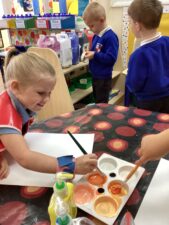
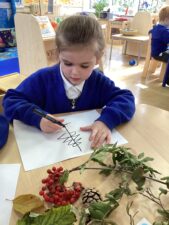


Year 1
In Year 1 the children explore craft and design in their artwork. They learn key skills such as knotting, plaiting and weaving. They also explore the work of Cecilia Vicuna to inspire their own art.
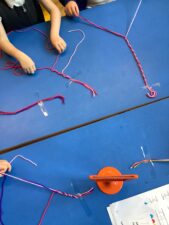
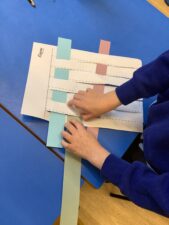


Year 2
In Year 2 the children have developed their understanding of colour mixing. They have been naming primary and secondary colours and describing what happens when they mix two secondary colours together. Next they chose materials and tools to make textures with paint and arranged their materials to create a collage effect.
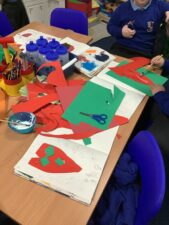


Year 3
In Year 3 the children build on their skills of weaving using the weft and warp. They use paper first to weave and they use material that they have dyed to create their final piece of weaving using material. This links to their Victorian topic as they use to weave different clothing.
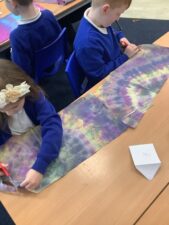
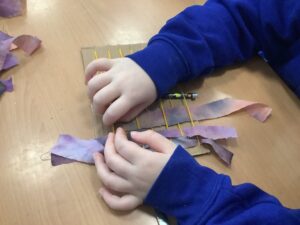

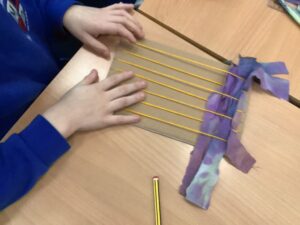
Year 4
In Year 4 the children use charcoal to draw observational life drawings with a focus on proportion. They also use crayons and paint a black background with soapy water. They use scissors to draw and scratch to make a pattern. They experiment with the water colours and test different shades to find the right match for their painting.
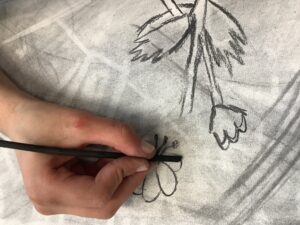
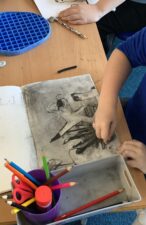


Year 5
In Year 5 the children explore a range of drawing processes and create a mixed media collage linked to their Science topic – Space. They also look at Retrofuturistic art based on ‘The Space Race’.



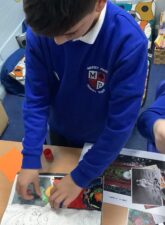
Year 6
In year 6 the children develop their photography skills and learn new techniques. They study the art work of Hannah Hoch, Edward Weston and Chris Plowman, and learn how a new image can be created using a combination of images. For their final piece, they use a grid to translate a photograph into a correctly proportioned image that creates a photo-realistic effect.
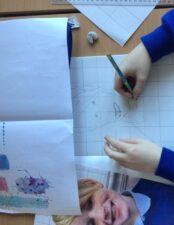
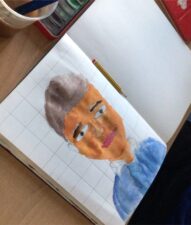
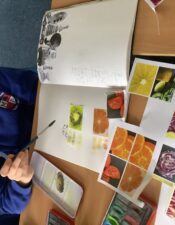
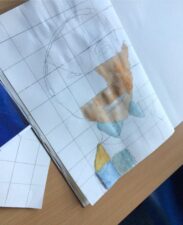
Spring Term
Foundation 1
In Foundation 1 the children paint, print, drizzle and drip to create different marks on paper. Through a variety of activities they explore the effect of each of these techniques and begin to understand when to use them. They use these different paint styles to create portraits of themselves. During this work they begin mixing colours to match their skin and hair colours.

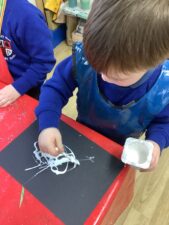
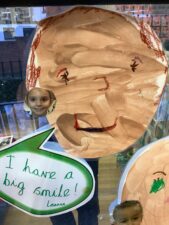
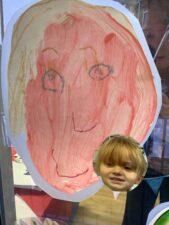
Foundation 2
In Foundation 2 children notice that they wear warm clothes during Winter. Therefore, they draw and label pictures of themselves wearing them and discuss why they are suitable. They also begin to look at some of the flowers seen during Spring. The children look carefully at the shape and colour of hyacinths and create some fabulous observational drawings.


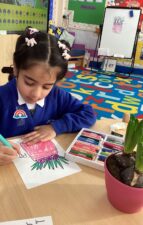
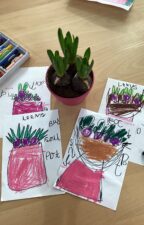
Year 1
In Year 1 children learn how to create different types of lines. They explore line and mark-making to draw water, develop an understanding of mark making and apply an understanding of drawing materials and mark making to draw from observation to look closely and reflect surface texture. They also begin to give opinions on their work and the work of others and explain these thoughts.

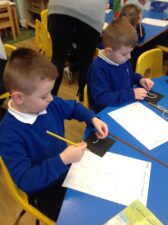
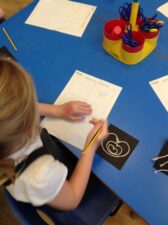

Year 2
In Year 2 they further develop mark-making within a greater range of media, demonstrating increased control. They develop observational skills to look closely and reflect surface texture through mark-making experimenting with form, drawing light/dark lines, patterns and shapes. They learn to explain their ideas and opinions about their own and other’s artwork, giving reasons and begin to talk about how they could improve their own work.

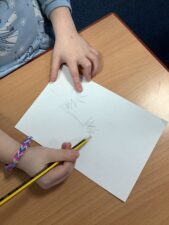

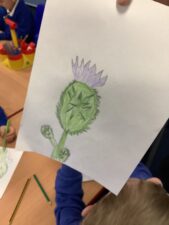
Year 3
In Year 3 the children use simple shapes to form the basis of a detailed drawing and shade to demonstrate a sense of light and dark in their work with a reasonable degree of accuracy and skill. They generate ideas mostly independently and make decisions to compose an interesting frottage image. They understand how to apply tone, with some guidance about where to use it and blend tones smoothly, following the four shading rules.

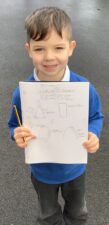
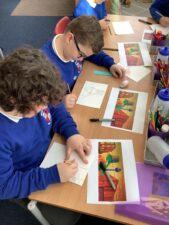

Year 4
In Year 4 the children explore different painting techniques using paint brushes, sponges and glue spreaders. They put PVA glue and salt in their colours to change the texture. After this, they look at still life and compare compositions, then create their own plan for a finished still-life painting. Having experimented with painting techniques, they paint a still life that showcases their own unique style.

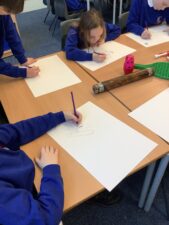


Year 5
In Year 5 the children learn about installation art. They look at and justify their opinions about existing installation art. They plan and make an installation model or space and describe how their design portrays a particular theme or message. They explain their choices about materials used, arrangement of items in the space and the overall display of the installation. They explore the work of Cai Guo-Qiang and discover how our life experiences can inspire our art and investigate how scale, location and interactive elements affect the way visitors experience installation art.
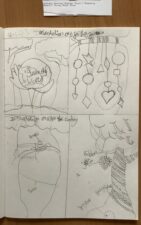

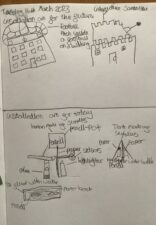
Year 6
In Year 6 the children explore a selection of paintings through art appreciation activities. They collect ideas in sketchbooks and plan for a final piece after researching the life, techniques and artistic intentions of an artist that interests them.



Summer Term
Foundation 1
In Foundation 1 the children collect sticks to print with and make their own Stick Man.


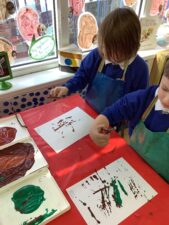
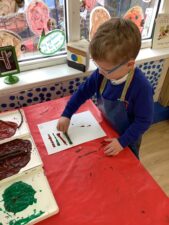
Foundation 2
In Foundation 2 the children enjoy pretending to be the characters from the story, ‘Jack and the Beanstalk’. They act out the story together using lots of familiar story language. They carefully draw Pirates after finding out about how some Pirates look and dress. They add lots of detail and use oil pastels to add colour.



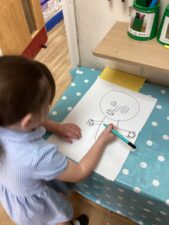
Year 1
In Year 1 the children complete a unit on painting and mixed media. They look at what happens when you mix primary colours together, how to create different texture effects and add to paintings with different materials to create texture.


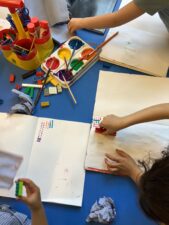
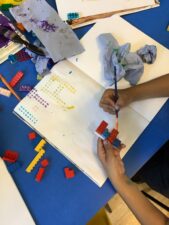
Year 2
In Year 2 the children plan and create their own clay medals. They design and plan how to create the key features in clay. They are able to flatten and smooth their clay, rolling shapes successfully and making a range of marks in their clay. They join at least one clay shape onto the side using the scoring and slipping technique.

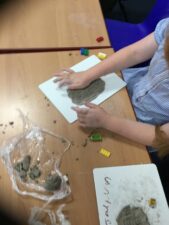
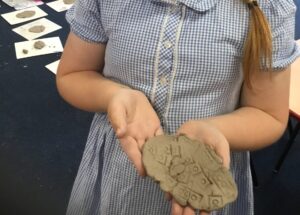
Year 3
In Year 3 the children sketch pictures of Queen Victoria to learn the skill of drawing portraits. They use different shading techniques by changing the grip of their pencil.
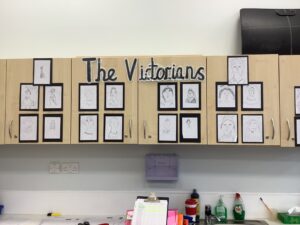


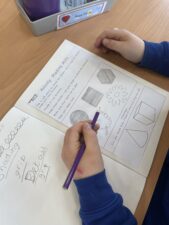
Year 4
In Year 4 the children immerse themselves in the sights and sounds of the rainforest. They draw a rainforest animal from four different perspectives. They learn how pattern designers work in the creative industries and the children create their own repeated rainforest patterns.
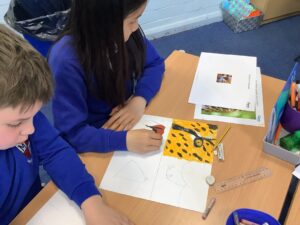


Year 5
In Year 5 the children have a go at creating outdoor 3D art sculptures. They focus on bringing the inside (world) to the outdoors. They use everyday objects to create 3D sculptures in the outdoor classroom.



Year 6
In Year 6 the children create layered pieces of art work using different mixed media to represent their different memories of primary school. They use corrugated cardboard to layer their memories and use semi-abstract shapes to create a three-dimensional assemblage sculpture in the style of Louise Nevelson.

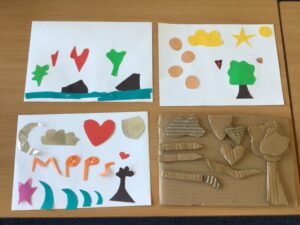

KS1 Art Club
During KS1 Art club they explore different artists and their work who inspire them to create a variety of arts and crafts including mosaics, watercolour and clay art.
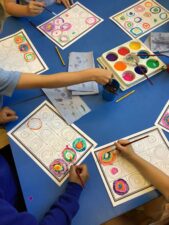

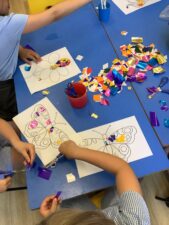

We were awarded the Silver Arts Mark, celebrating our ambitions for high quality arts and cultural provision.